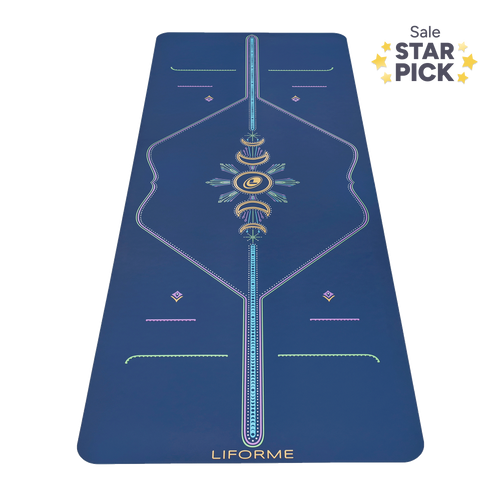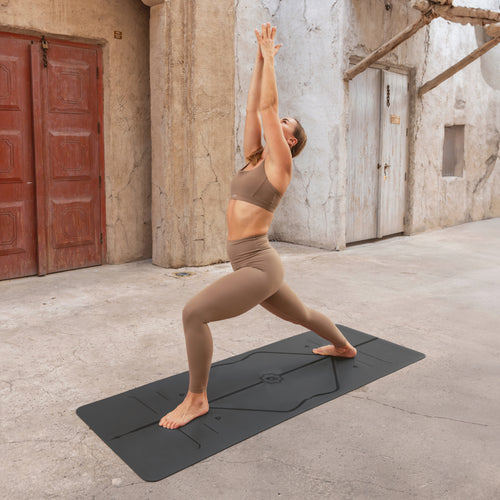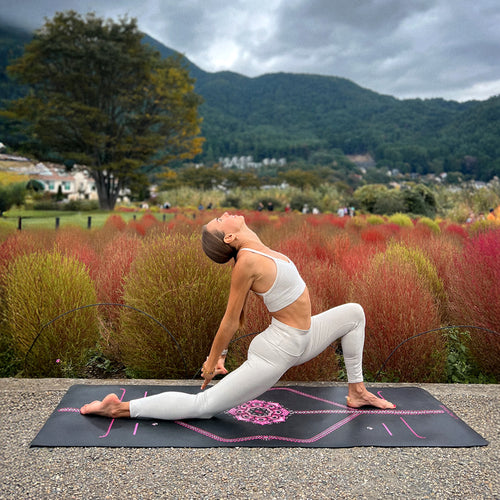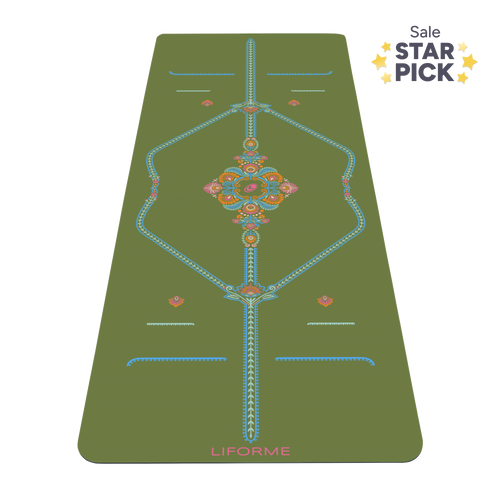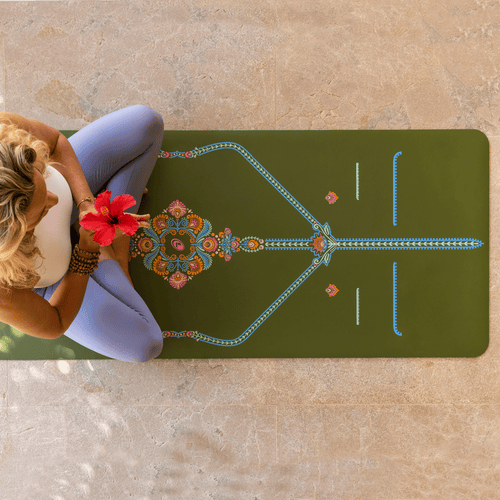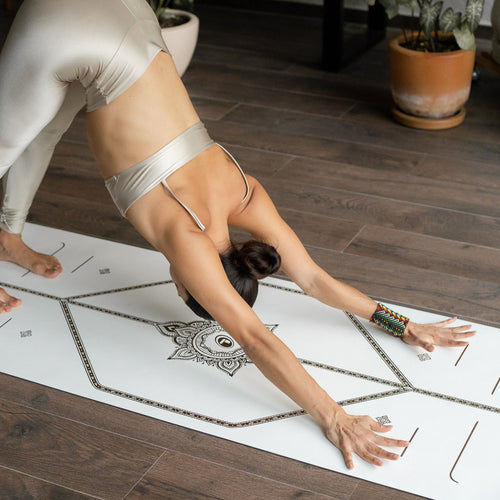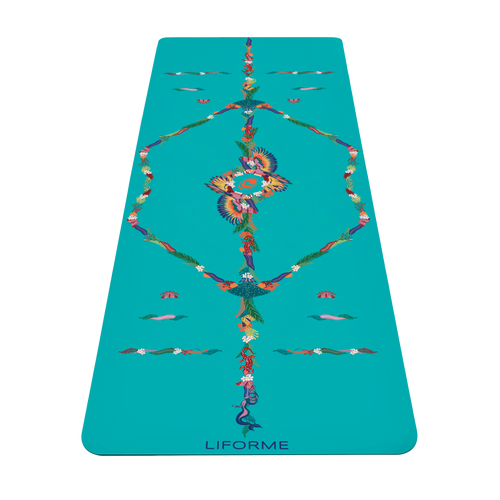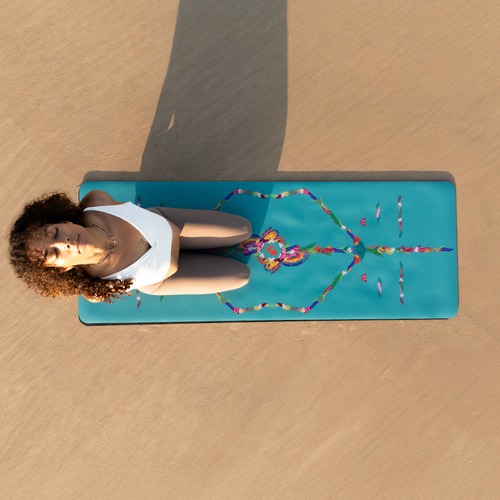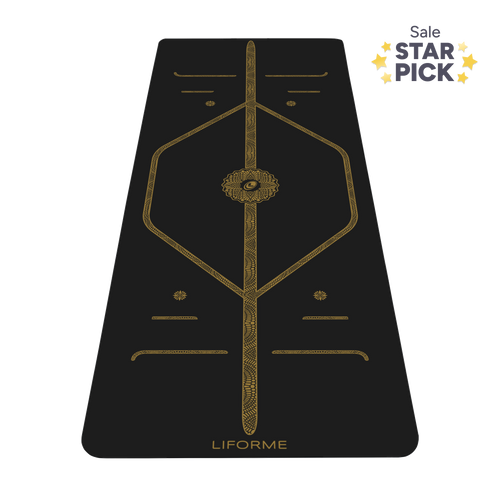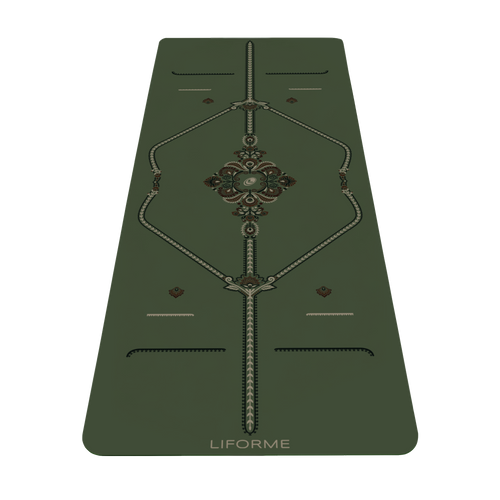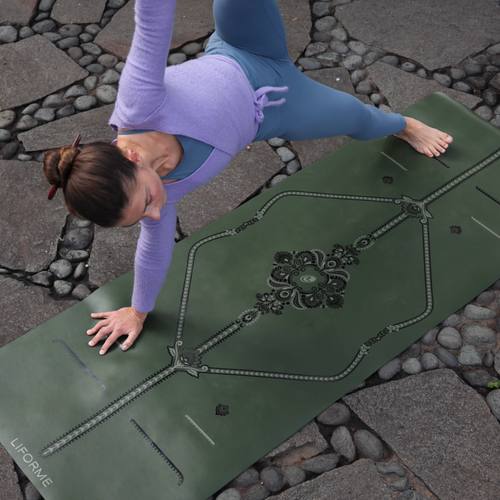Many of Plow Pose’s benefits stem from it being an unfamiliar position. Putting your body into new shapes brings attention to neglected places, giving them opportunities to open and strengthen.
However, you must approach poses like this with some caution for the very same reasons: neglected places are often vulnerable. For Halasana, this means going slowly, understanding the key alignment points, and using props for support.
Flowing classes may move through Plow Pose briefly, but for longer holds, use a full complement of props for comfort and safety.
Step-by-Step Instructions for Plow Pose
- Lie on your back with your arms by your sides, legs bent, and knees pointing toward the ceiling. If you are using blankets for support, set them at the end of your mat so your shoulders rest on the blankets and the back of your head on the floor.
- Lift your feet off the floor and straighten your legs so they are perpendicular to the floor.
- Use your abs to take your legs over your head.
- Flex your feet and curl your toes under as they touch down behind your head. If your feet don’t reach the floor, set up close to a wall or place a chair behind your head.
- Bend your elbows and bring your hands to your back for support.
- Walk your feet away from your head until your hips are stacked over your shoulders.
- Release your arms to the floor. You can clasp them behind your back or keep them on either side of your body.
- Hold for around five breaths. To exit, release the hands if they are joined and roll down one vertebra at a time until your back is flat on the mat.
🧘 Tip from a Yogi
"If you’ve tried Plow and thought, “this is not for me”, using props may be the answer. Using a wall or a chair behind your head raises the floor to your feet, which immediately makes the pose more accessible.
Lifting your shoulders with a few folded blankets can make your neck much more comfortable as well.
Remember that using props is not cheating; it’s a way to ensure that you can sustain your practice over a long period of time, which is the key to experiencing all yoga’s benefits."
Plow Pose Basics
Sanskrit Meaning: Hala (Plow) Asana (Pose)
Yoga Level: Intermediate
Pose Type: Inversion
Pose Category: Back Stretch
Precautions: Avoid this posture if you have glaucoma or a neck injury.
Common Props:
- Two or three blankets, folded so they are around the same width as your yoga mat.
- A wall or a chair for your feet if they don’t easily reach the floor when taken overhead.

Halasana Benefits
- Stretches the neck and spine.
- Strengthens the back and core.
- Opens the shoulders and back of the legs.
Key Alignment Cues
-
Shoulders on Blankets, Head on the Floor
The blankets’ purpose is to lift your shoulders so that the curve of your cervical spine (the neck) isn’t flattened against the floor. -
Hips over Shoulders
Stack your hips over your shoulders. This can be hard to feel, so ask a teacher or friend to give you some feedback. -
Eyes Up, Neck Still
Keep your gaze upwards. Don’t turn your head to the side while there is pressure on your neck. -
Support Your Feet
Halasana is based on having your feet rest on something. If your feet don’t come to the floor, use a wall or a chair as a prop. Leaving the feet dangling in the air is not the posture.
Beginner Tips for Plow Pose
- You can bend your knees slightly if necessary.
- If your feet are far from the floor, set up with a wall or chair. It might take a few attempts to find the right distance; this is a trial-and-error situation, so take your time to figure it out.
- If you use a wall, over time, you may be able to walk your feet down toward the floor.
Plow Pose Variations

Ear Pressure Pose (Karnapidasana)
From Plow, bend your knees until your shins come to the mat. Hug your knees in toward your head, putting slight pressure on your ears.

Shoulderstand (Salamba Sarvangasana)
Shoulderstand can follow from Plow or vice versa. Many of the alignment points carry through both poses, particularly hips over shoulders.
If you are using blankets for Halasana, you can use them for Shoulderstand too.
Prepatory Pose

Legs Up the Wall (Viparita Karani)
A more restorative inversion that stretches the backs of the legs.
Counter Pose

Reverse Table Pose (Ardha Purvottanasana)
Open your neck and chest and release your shoulders.
Why We Practice Plow Pose
With the right props, Plow Pose is a gentle way to introduce inversions to your yoga practice. These poses improve circulation and strengthen your core, among other benefits. Starting to go upside down also pushes lightly at the edges of your comfort zone, expanding the possible.
Plow Pose FAQs
Is Plow Pose safe?
Yes, with smart setup: shoulders on folded blankets, feet supported (floor, wall, or chair), and head kept neutral. Skip if you have glaucoma, a neck injury, or medical advice against inversions.
How to do Halasana as a beginner?
Start with 2–3 blankets under your shoulders and place a wall or chair behind your head so your feet can land. Move slowly and aim to stack hips over shoulders.
How long should I hold Plow Pose for?
About five slow breaths is a good start; stay longer only if you’re fully supported and breathing comfortably.
Common Halasana mistakes to avoid?
The big one is turning your head while weight is on your neck. Keep your gaze straight up in Halasana. Rest your shoulders on 2–3 folded blankets (head on the floor) to maintain the cervical curve, and give your feet support (floor, wall, or chair) so they don’t dangle. Also, avoid letting the hips sit behind the shoulders or rushing the entry/exit; walk the feet away to stack hips over shoulders, breathe steadily, and roll down one vertebra at a time.
What are the key Halasana benefits?
Halasana lengthens the back body, while building gentle core and back strength to support healthy spinal mobility. Plow Pose also prepares you for Shoulderstand and deeper forward folds.






